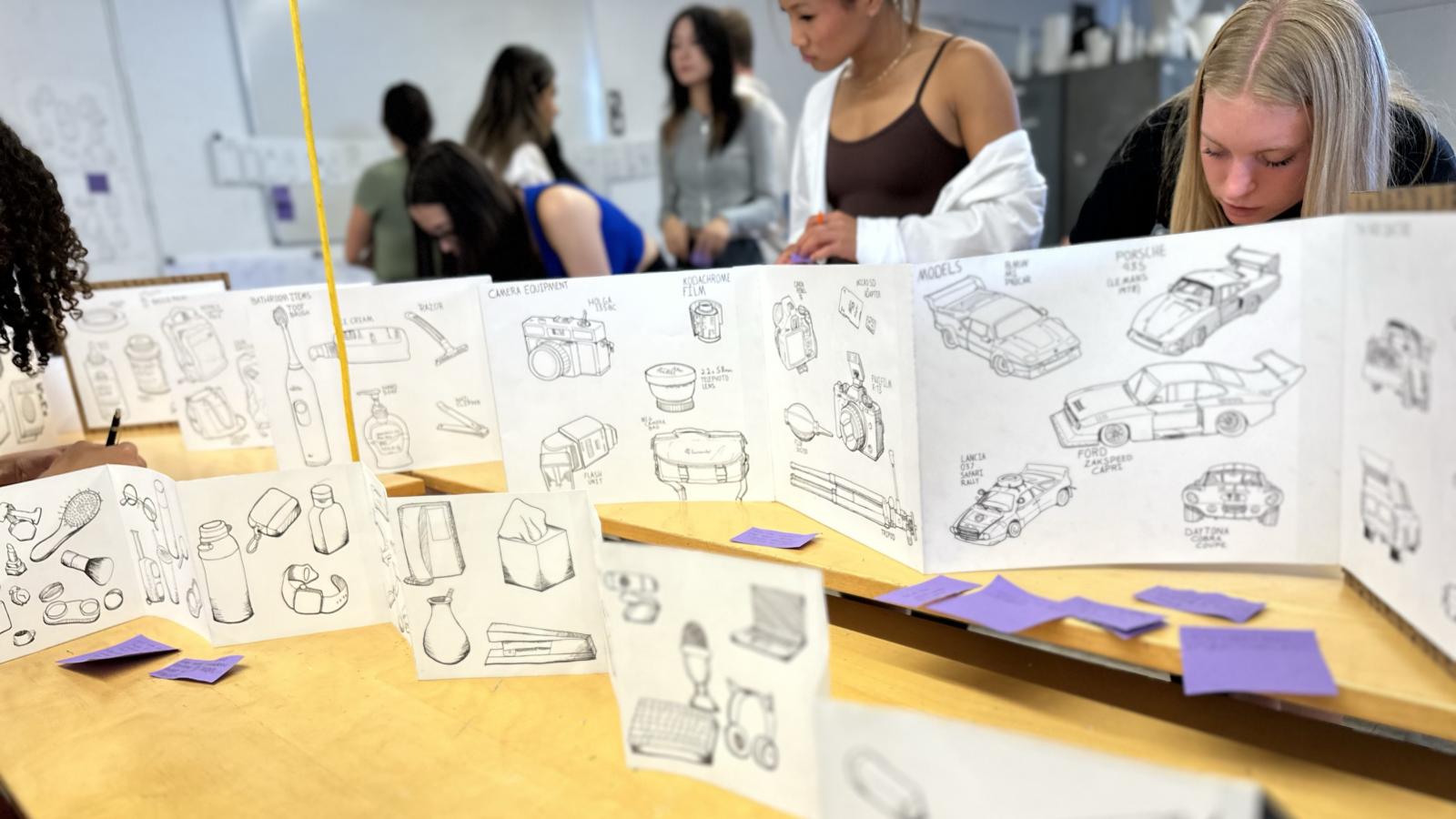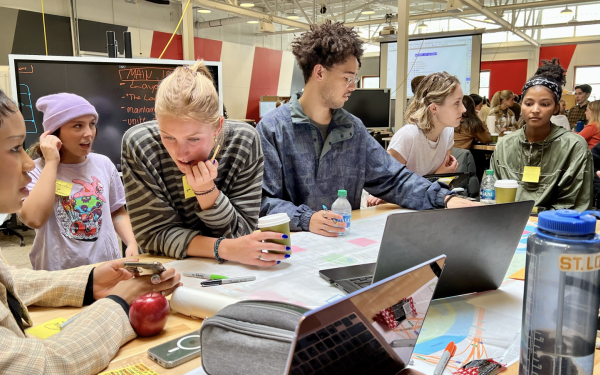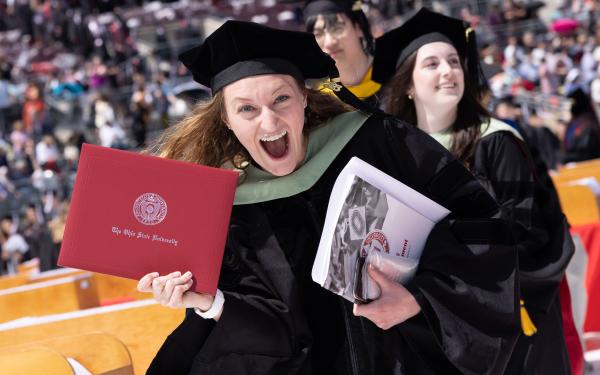Start your journey in design—where creativity meets purpose.
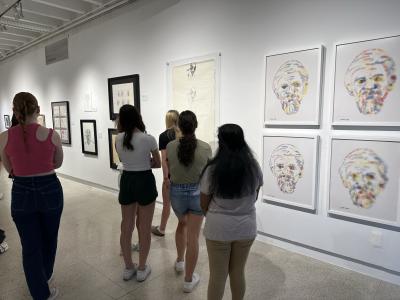
At Ohio State Design, your journey begins with our Design Foundations program—a shared first-year experience that sets the stage for everything to come. Whether you're drawn to products, spaces, visuals, or immersive media, this is where you’ll explore it all.
From Selection to Specialization
Admission to the Design Foundations program is competitive. Once selected, you’ll begin building your portfolio, sharpening your skills, and preparing for the spring major admissions review—your opportunity to apply to one of four undergraduate design majors.
Design Foundations is more than a curriculum—it’s your launchpad into the world of design.
Your First Year in Design: Structured for Success
Design Foundations is a hands-on, immersive first-year experience that builds the creative and technical skills you’ll need to thrive in any design discipline. Each course builds on the last, guiding you through a structured sequence that prepares you for your chosen major.
In your first year, you’ll dive into hands-on studio work, learn the fundamentals of design thinking, and build essential skills in drawing, digital tools, and visual literacy. You’ll collaborate with other aspiring designers, discover your strengths, and gain exposure to all four of our undergraduate majors. By the end of the year, you’ll be ready to apply to the major that fits your passion and purpose.
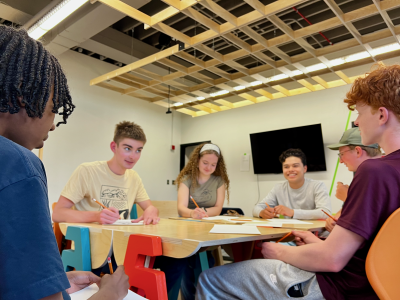
Course Sequence Overview
Autumn
DESIGN 2110: Design Fundamentals I
DESIGN 2310: Visual Principles and Techniques I
Online Design Lecture*
Spring
DESIGN 2130: Design Fundamentals II
DESIGN 2330: Visual Principles and Techniques II
Online Design Lecture*
*Online Design Lecture: Students will take either DESIGN 2700: Introduction to Design Practice or DESIGN 2750: Design History in each semester, depending on availability and advising recommendations.
Each course is offered once per academic year and must be taken in order. Because each class is a prerequisite for the next, staying on track is essential. Students who do not successfully complete a required course will not be able to continue in the Foundations sequence.
"The Design Foundations program builds the mindset and versatility needed to succeed in a rapidly evolving creative landscape."
Deb Scott, Design Foundations Coordinator
"Now that you are in the major, how was Design Foundations?"
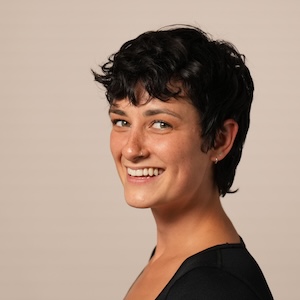
As a non-traditional student, I had reservations about reentering the academic space without much of a portfolio. I was concerned that my lack of tangible work might keep me from being admitted into the design program and would find me lagging behind my classmates. The year of design foundations resolved these concerns for me in several ways. Not only was a portfolio of work not required for acceptance into the program, but our professors also taught us how to synthesize our work and discuss it in a professional portfolio format. I also found that although skill levels and experience varied across the classroom, the structure of both semesters eased all of us into design, learning about principles, theory, and practice in a cumulative manner.
I am deeply grateful for the structure of this program and the experience I had in my design foundations year. I learned much about the basics of design and was able to explore and learn about each of the four design majors before transitioning to the second year. This setup was extremely beneficial for me as I discovered that my interests and career goals were more aligned with Industrial Design than with Interior Design, my previously declared major. Thanks to my professors’ guidance and the information I was able to gather in my design foundations year, I was able to choose a major that deeply resonates with me and my career goals.
The principles I learned in my design foundations year have also proved to be invaluable in my design practice. Without any previous exposure to design in an academic setting, I can imagine completing the design projects I am working on now would have been quite challenging. With the knowledge I gained in my design foundations year, however, I am now able to employ a more wholistic design process. It truly has proved to be the foundation that I needed.

I had no idea what I wanted for my future. I knew I was creative but didn’t want to major in art. I googled computer science jobs—something my parents would’ve liked—and that’s when I found UI/UX design. This seemed a good compromise between my interests and theirs. So, I applied to the Foundations Design program, and my first year was nothing like I’d imagined.
I learned how to think and work like a designer, but also about myself and my classmates. We spent time together daily—working, hanging out, relaxing—and supported each other academically and emotionally. Many projects felt personal, leading to moments of vulnerability with peers and professors.
Though most projects weren’t group-based, communicating with others opened up new ideas, methods, and techniques. Now in the Experiential Media major, I still think about how design is about sharing, coming together, and trying new things.
As a somewhat nervous person, I sometimes struggle to connect with others. But in Foundations, I took a leap of faith and let my peers see the real me. The result was real connections, real friendships—something I’ll always be grateful for.

I chose The Ohio State University’s design program because I was drawn to how seriously it takes creative thinking—not just making things look good but understanding why they matter. Each project is rooted in purpose, helping build a strong foundation of design knowledge. I learned to embrace critique, trust my instincts, and lean on my peers.
At first, I was not certain what major to pursue, but the assignments in Design Foundations made my decision easy. The program lets you explore the best of all the majors and test everything out. I was fortunate to meet some amazing peers in my classes. Since the studios were long, I was able to make best friends with people in the program. We supported each other through late nights in Hayes and built a true sense of community. I can be myself and develop wild ideas—with the help of others.
Design Foundations pushed me to think deeper, work harder, and refine my craft. But what truly made the difference were the teachers. They challenged me, supported me, and believed in me—even when I doubted myself. They helped me become not only a better designer, but a better person. I am grateful for the experience, and I would not trade it for anything.
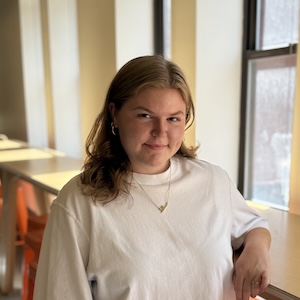
I chose Ohio State because I was looking for a design program that felt more personal and close-knit. Something that would allow me to truly connect with my peers and professors, rather than feeling like just another number in a massive cohort. Being a lifelong Buckeye fan, the opportunity to combine my school spirit with my passion for design made the decision feel natural and exciting.
When I first joined the program, there was a sense of competition. It’s a selective environment, and that can create tension. But that mindset quickly shifted. Instead of competing, my classmates and I began to realize we were all in this together. Supporting each other, sharing ideas, and collaborating became the norm—and that sense of community has been one of the most valuable parts of my experience.
The foundations courses were a turning point for me. They gave me space to experiment, reflect, and discover how I think and create as a designer. I learned to slow down during iteration, trust the process, and embrace exploration. Those lessons have stuck with me and continue to shape how I approach projects in my upper-level classes.
I’ll admit, I was worried at first that I wouldn’t be a “good fit” for the design program. Design can feel intimidating when you’re just starting out, and I questioned whether I had the right skills or perspective. But I quickly realized there’s no single mold for what a designer should be. Everyone brings something unique to the table and that diversity of thought and style is exactly what makes the program so dynamic and inspiring.

